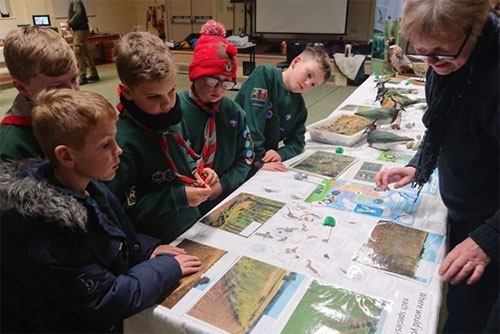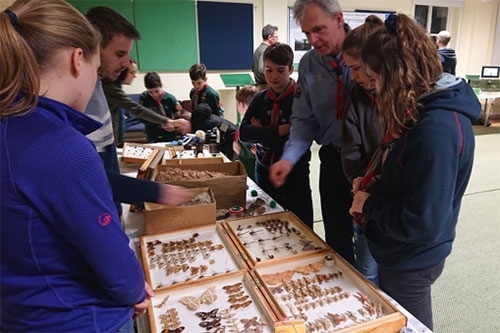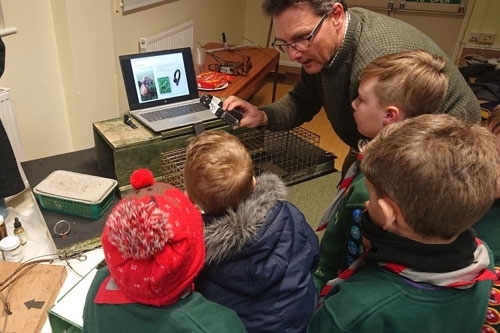By Ellie Jackson-Smith, Farmland Ecology Intern
 On the evening of Wednesday 26 February, we hosted 15 Cub Scouts from 1st Sandleheath Sea Scouts for an interactive demonstration of the research we carry out. The evening worked towards their Nature Badge and was run to coincide with World Wildlife Day on 3 March. This year World Wildlife Day will be celebrated under the theme of ‘sustaining all life on Earth’, and we encouraged the cubs to think about how they could be more sustainable – from hanging bug hotels in the garden to turning lights off in the house. The evening was based around three stations, which represented the three-legged stool – habitat management, predation control and food provision – that underpins the survival of all species.
On the evening of Wednesday 26 February, we hosted 15 Cub Scouts from 1st Sandleheath Sea Scouts for an interactive demonstration of the research we carry out. The evening worked towards their Nature Badge and was run to coincide with World Wildlife Day on 3 March. This year World Wildlife Day will be celebrated under the theme of ‘sustaining all life on Earth’, and we encouraged the cubs to think about how they could be more sustainable – from hanging bug hotels in the garden to turning lights off in the house. The evening was based around three stations, which represented the three-legged stool – habitat management, predation control and food provision – that underpins the survival of all species.
We used birds such as lapwing and grey partridge to demonstrate the importance of habitat management. The activities included sorting species into their preferred habitat, identifying predator tracks and spotting the lapwing nest – think Where’s Wally, but with eggs and stones!

The second station was all about insects, which are useful indicators of environmental health as well as being crucial food items for many birds. One end of the table offered a mud dig crawling with spiders, snails, beetles, woodlice and worms, while the other end was scattered with twigs, leaves and lots of cardboard for the Cubs to make their own five-star bug hotel to take home.

The final station explained mammalian predator research, showing the different monitoring techniques used for various mammalian species, including breakaway snares, ink-tracking tunnels and mink rafts – smelly baits included! It was explained that mammalian predation research is important to help us inform control efforts and to understand the best ways to protect vulnerable ground-nesting species, such as lapwing and grey partridge.
This is crucial to removing the stigma that surrounds this controversial topic, and it was fantastic to see the Cubs so engaged in understanding how snares can be used humanely when best practice is followed. To finish the predator session, the Cubs were taken outside to track down their own (stuffed!) fox using radio-tracking equipment in what was arguably the highlight of the evening.

Time flew by and, as we handed out mementos of the evening, parents, guardians and siblings filtered into the room to have a look at the displays. The Cubs buzzed with excitement as they showed their parents around and shared all they had learnt during the evening. Many parents expressed they would have loved to attend themselves as they were unaware of the breadth of research carried out by the Trust. It was thoroughly enjoyed by staff, Cubs and leaders alike, and we hope this is the first of many sessions with groups from the local community.

Photos credit: Richard Farr